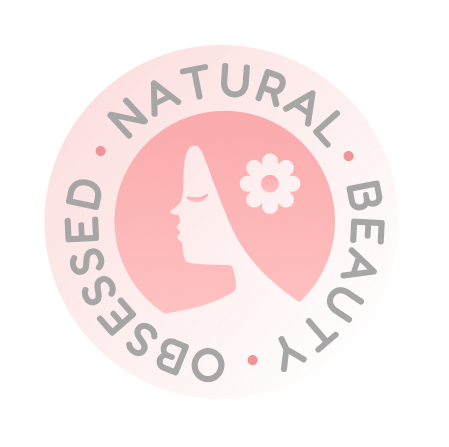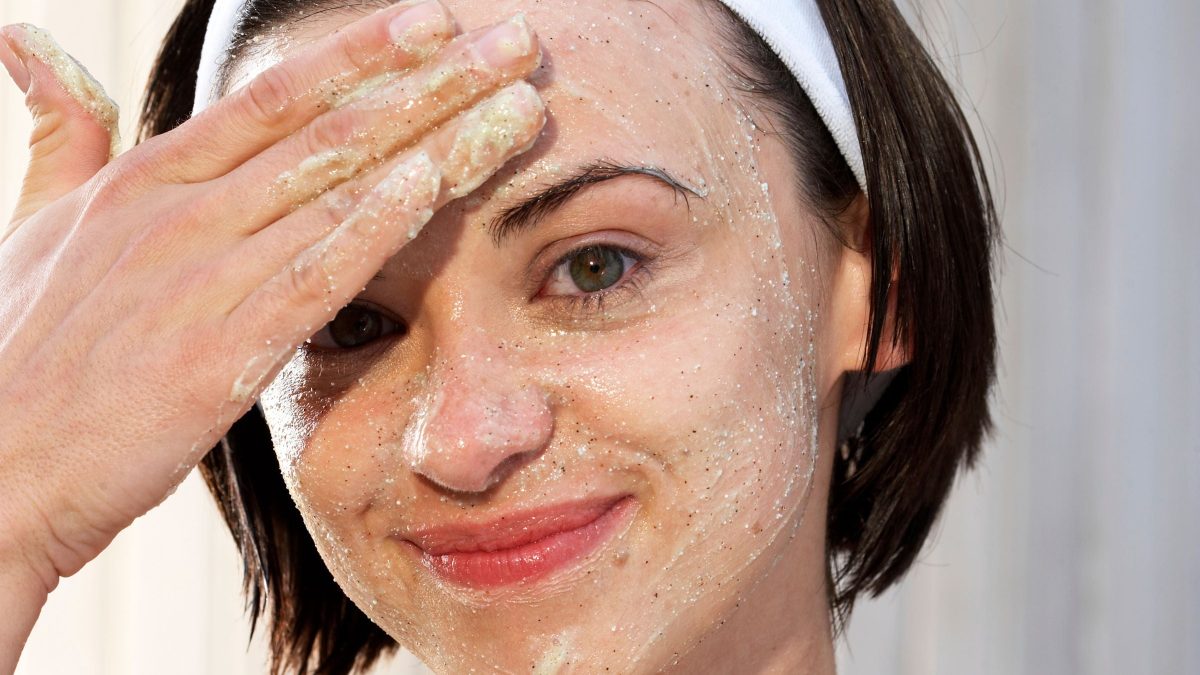Learn the techniques to safely and gently exfoliate!
Posted on October 20, 2024 Written by: 100% PURE®

Whether it’s because you have a special day coming up, or because your feed is still loaded with the “clean girl look,” it’s natural to get that craving for skin that’s smooth, renewed, and glowing.
And after researching ways to get radiant skin quickly, you inevitably stumble upon exfoliation as the solution. Only, there’s one problem: you’re not sure if your skin can handle it.
If you’re worried about irritating or damaging your skin with a harsh exfoliating session, you’re not alone–while this method can do wonders for dry, dull skin, doing it incorrectly or too harshly can actually irritate it.
However, we’re here to tell you that exfoliating is a method for everybody; you just need to find the method that works for you and your skin. There’s an incredibly wide selection of options in exfoliants, and while it can be daunting, we’re here to provide guidance.
In this article, we’ll dive into gentle exfoliation methods for sensitive skin, and how you can reveal that luminous, hydrated skin you’re seeking.
Understanding Exfoliation for Sensitive Skin
Let’s start with the basics: what is exfoliation?
To put it simply, exfoliation is the act of sloughing dead skin and sebum off the skin’s surface, freeing up newer skin from beneath.
When done consistently, exfoliating can be highly effective in not only preventing the buildup of dead skin and other “gunk” on your face and body, but also for fighting dullness, combating breakouts, reducing pore size and, over time, it can even reduce the appearance of hyperpigmentation.
However, it’s very easy to either overdo it when it comes to exfoliating, or even to do it incorrectly altogether. That being said, mistakes tend to start with the exfoliant you choose, which is why it’s important to find one that works for you.
With that in mind, let’s start with a broad tour of the major types of exfoliants: physical, chemical, and enzymatic.
Types of Exfoliation
- Physical exfoliation entails the mechanical removal of debris with something with natural, gentle grit like a scrub.
- Chemical exfoliation uses gentle acids that dissolve the “glue” holding dead skin and sebum to your skin’s surface.
- Enzymatic exfoliation is similar to chemical exfoliations, but instead of acids, they use enzymes from fruits to break down dead skin and sebum

Gentle Physical Exfoliation Methods
For someone with sensitive skin, the idea of using a physical exfoliant might seem intimidating, but when done carefully with the right product, it can be a beneficial addition to a skincare routine. Physical exfoliants work by manually sloughing away dead skin cells with small particles, such as finely milled jojoba beads or rice bran, which can leave the skin feeling smooth and refreshed. For sensitive skin, it’s crucial to choose a physical exfoliant with gentle, rounded particles and avoid those with rough, sharp granules that could cause microtears or irritation. Using a soft, gentle motion and exfoliating only once or twice a week can help sensitive skin from the glow-boosting effects of physical exfoliation without the risk of overdoing it.
That being said, here are some examples of physical exfoliation methods:
Soft Cloths and Brushes
-
Microfiber Cloths
- Microfiber cloths offer a gentl yet effective exfoliation method that is perfect for sensitive skin. These soft cloths exfoliate without causing irritation, making them ideal for daily use. Regular exfoliation with microfiber cloths also help prepare the skin to better absorb serums and moisturizers, enhancing their effectiveness. In addition to exfoliating, they are multi-tasking tools that can remove makeup and cleanse the skin, often without the need for a separate cleanser. Plus, microfiber cloths are reusable, machine-washable, and lightweight, making them a more sustainable and travel-friendly alternative to disposable wipes or bulky skincare products.
-
- Konjac facial sponges are widely regarded for their ability to cleanse and gently exfoliate skin. Made from the gentle fibers of the konjac plant, using one of these sponges is frequently recommended for unclogging pores and diminishing dullness, especially with oily and acne-prone skin.
-
Gentle Dry Brushing Techniques
- Dry brushing can be a great way to gently exfoliate and invigorate the skin. To practice gentle dry brushing techniques, start with a natural bristle brush, preferably one with a long handle to reach all areas of your body. Begin at your feet or your ankles and work your way upward, using light pressure and small, circular motions. For thicker skin, like the soles of your feet, you can use a bit more pressure, but be mindful of sensitive areas like the abdomen, breasts, and neck, where you should apply less force. Avoid going over the same spot too long to prevent irritation or injury. After dry brushing, take a lukewarm shower to wash away dead skin cells, then follow up with a moisturizer to keep your skin hydrated. Consistency is key, so aim to dry brush for a few minutes several times a week. Always adjust your pressure based on comfort, and if you’re brushing your face, opt for a softer brush to avoid irritation.
Natural, Mild Abrasives
-
Rice Bran
- Rice bran is an excellent gentle exfoliant that can be used daily without irritating the skin, making it suitable for a variety of skin types. Its softer texture compared to other physical exfoliants allows for effective exfoliation without minimizing the risk of sensitivity. In addition to its exfoliating properties, rice bran also helps balance the skin’s natural oils and provides hydration, promoting a healthy and moisturized complexion.
-
Oatmeal Scrubs
- Oatmeal can also be used as an exfoliant to remove dead skin cells, dirt, and oil. It can also moisturize and reduce inflammation, making it a common home remedy for dry, itchy, or irritated skin.
-
Jojoba Bead Exfoliants
- A hardened form of jojoba oil, jojoba beads are a common exfoliating ingredient in face and body scrubs. They are smooth and round, and their rolling motion gently removes dead skin cells without damaging the skin. Jojoba beads are also biodegradable and customizable, making them ideal for a wide variety of exfoliating products.
Chemical Exfoliation for Sensitive Skin
When it comes to skincare, chemical exfoliation offers a powerful and effective way to achieve a smoother, more radiant complexion. For individuals with sensitive skin, understanding the different types of chemical exfoliants—AHAs, BHAs, and PHAs—is essential to finding the right product that balances efficacy with gentleness.
Understanding AHAs and BHAs
AHAs (Alpha Hydroxy Acids) are water-soluble acids that primarily work on the skin’s surface. They are designed to shed dead skin cells from the outer layer, resulting in a brighter and more even skin tone. AHAs are particularly beneficial for normal to dry or sun-damaged skin, as they not only improve moisture levels but also address surface-level concerns like roughness, fine lines, and pigmentation. Common types of AHAs include glycolic acid (from sugar cane), lactic acid (from milk), and mandelic acid (from almonds). One of the standout options for sensitive skin is lactic acid, known for its gentle nature, making it suitable for regular use while still delivering effective results such as improved texture, increased hydration, and even skin tone.
BHAs (Beta Hydroxy Acids), on the other hand, are oil-soluble and can penetrate deeper into the skin by dissolving oil. This unique property allows them to unclog pores effectively, making BHAs ideal for oily or acne-prone skin. By working within the pore, BHAs remove excess sebum and dead skin cells, helping to treat blackheads, whiteheads, and clogged pores. Salicylic acid, derived from willow bark, is the most common BHA and is renowned for its ability to reduce acne and excess oil production while calming inflammation.
PHA: The New Generation of Gentle Exfoliants
Introducing PHAs (Polyhydroxy Acids), the new generation of gentle exfoliants that provide an effective solution for those with sensitive skin. PHAs have a larger molecular structure than AHAs, meaning they penetrate the skin more slowly and are less likely to cause irritation, redness, or sensitivity. This characteristic makes them perfect for individuals with sensitive, dry, or reactive skin, including those dealing with conditions like eczema or rosacea.
In addition to gentle exfoliation, PHAs serve as humectants, drawing moisture into the skin and improving hydration levels while exfoliating. They also offer antioxidant protection, helping to shield the skin from environmental damage and reducing the effects of free radicals that can lead to premature aging. Another advantage of PHAs is their minimal sun sensitivity; unlike AHAs, they are less likely to increase the skin’s sensitivity to sunlight, making them safer for outdoor use—though sunscreen is still a must.
Common types of PHAs include gluconolactone, which provides hydration and antioxidant benefits; lactobionic acid, known for its moisturizing properties and ability to strengthen the skin barrier; and galactose, a naturally occurring sugar that aids moisture retention and provides mild exfoliation.
Overall, PHAs offer gentle exfoliation suitable for all skin types, especially those with sensitive skin. With their ability to enhance hydration, provide antioxidant protection, and reduce irritation compared to stronger acids, PHAs are an excellent option for anyone seeking a more soothing approach to chemical exfoliation. By choosing the right exfoliant, individuals with sensitive skin can enjoy the benefits of chemical exfoliation without compromising their skin’s comfort or health.
Navigating Exfoliation Myths and Marketing
When it comes to skincare, myths can often cloud judgment and lead to missed opportunities for healthy skin. One prevalent myth is the notion that individuals with sensitive skin should avoid exfoliation altogether. This belief can be detrimental, as gentle exfoliation can actually enhance skin health and improve overall texture. It’s essential to understand that sensitive skin can still benefit from exfoliating products, particularly when they are formulated with gentle ingredients like PHAs or low-concentration AHAs and BHAs.
Debunking the “No Exfoliation for Sensitive Skin” Myth
The idea that sensitive skin should forgo exfoliation stems from a misunderstanding of what sensitivity really means. Sensitive skin often reacts to environmental factors, irritants, or harsh ingredients, rather than to the act of exfoliation itself. When approached with the right techniques and products, exfoliation can help remove dead skin cells, unclog pores, and promote a smoother complexion without causing irritation. It’s crucial to select exfoliants specifically designed for sensitive skin, focusing on gentler options that provide the benefits of exfoliation without compromising comfort.
Understanding “Sensitivity” in Product Claims
Another challenge is deciphering product claims related to “sensitivity.” Many brands promote their products as suitable for sensitive skin, but the effectiveness and gentleness can vary significantly. It’s essential to read ingredient labels carefully and look for formulations that prioritize soothing, hydrating components alongside exfoliating agents. Products containing ingredients like aloe vera, chamomile, or green tea can help calm irritation and support sensitive skin during the exfoliation process. Always consider doing a patch test to gauge how your skin will respond before fully incorporating a new product into your routine.
Avoiding Over-Exfoliation and Harsh Treatments
While exfoliation is beneficial, over-exfoliation can lead to more harm than good, particularly for sensitive skin. Stripping the skin of its natural oils can cause irritation, redness, and increased sensitivity. To avoid this, it’s vital to establish a balanced exfoliation routine. Start with a gentle exfoliant and limit usage to 1-2 times a week, gradually adjusting based on your skin’s response. Pay attention to your skin’s signals—if you notice signs of irritation or discomfort, scale back on the frequency or switch to a milder product.
The Gentle Exfoliation Solution: Building Your Routine
Creating a gentle exfoliation routine can be a transformative step toward achieving healthy, radiant skin. By approaching exfoliation with care and attention, you can enjoy the benefits without risking irritation or damage.
Frequency of Exfoliating
When starting your exfoliation journey, it’s crucial to begin slowly and build your skin’s tolerance over time. For those with sensitive skin, introducing exfoliation just once a week is a wise starting point. As your skin adapts, you can gradually increase frequency to 1-2 times weekly, depending on how your skin responds. Listening to your skin’s needs is paramount; if you notice any signs of irritation, such as redness, dryness, or discomfort, it may be time to scale back. This approach not only allows your skin to adjust but also helps you identify the ideal frequency that enhances your complexion without causing harm.
Application Techniques
When applying exfoliants, using gentle motions and light pressure is key to protecting your skin. Whether you’re using a chemical exfoliant or a physical scrub, avoid aggressive scrubbing or rubbing, as this can lead to irritation. Instead, focus on soft circular motions or a gentle swipe, allowing the product to work its magic. Additionally, post-exfoliation care is essential for maintaining your skin’s health. After exfoliating, always follow up with a hydrating serum or moisturizer to replenish moisture and soothe the skin. This step helps mitigate any potential dryness or sensitivity caused by exfoliation.
Combining Methods Safely
Combining different exfoliation methods can enhance your routine when done safely. Alternating between physical and chemical exfoliants allows you to target various skin concerns while minimizing the risk of over-exfoliation. For instance, you might choose to use a gentle physical scrub one week and a mild chemical exfoliant the next. Furthermore, consider making seasonal adjustments to your routine. In drier months, you may want to opt for more hydrating exfoliants like PHAs, while summer might call for lighter AHAs or BHAs to address oiliness or clogged pores.

100% PURE Gentle Exfoliation Products
When it comes to gentle exfoliation, 100% PURE offers a range of products designed to cater to various skin types and concerns while prioritizing safety and effectiveness. These carefully formulated products harness the power of natural ingredients to provide the benefits of exfoliation without compromising your skin’s comfort.
The Fermented Rice Water Toner is a fantastic introduction to gentle exfoliation. This toner utilizes the natural exfoliating properties of fermented rice water, which helps to brighten and smooth the skin. Packed with antioxidants, vitamins, and minerals, it nourishes while providing a mild exfoliating effect. This toner is perfect for prepping the skin for subsequent treatments, enhancing absorption, and leaving your complexion radiant and refreshed.
The Acai Pulp Facial Scrub offers a delightful blend of gentle physical exfoliation and nourishing ingredients. Formulated with acai pulp and natural exfoliants, this scrub helps to buff away dead skin cells, revealing a smoother texture. Its hydrating properties ensure that your skin feels soft and moisturized post-exfoliation, making it suitable for regular use without the fear of irritation.
For those with sensitive skin, the Lavender Oat Milk Soothing Cleanser provides a gentle cleansing experience with mild exfoliating properties. Infused with calming lavender and nourishing oat milk, this cleanser helps to soothe irritation while effectively removing impurities. Its light exfoliating action promotes a fresh and clean complexion, making it an ideal choice for daily use.
The 10% Fruit Acids Apple Enzyme Resurfacing Serum offers a potent yet gentle solution for those seeking chemical exfoliation. With its blend of fruit acids derived from apples, this serum works to dissolve dead skin cells and promote cell turnover, revealing a brighter and more even complexion. The formula is designed to minimize irritation, making it suitable for sensitive skin types looking to enhance texture and radiance.
Completing the lineup is the 7% Fruit Acids Apple Enzyme Exfoliating Cleanser, which combines the cleansing action of a traditional face wash with the exfoliating benefits of fruit acids. This cleanser effectively removes dirt and impurities while gently exfoliating the skin, helping to prevent clogged pores and promoting a smoother texture. Its balanced formulation ensures that even those with sensitive skin can enjoy the benefits of exfoliation without discomfort.
Conclusion
Gentle exfoliation is a vital component of a healthy skincare routine, especially for those with sensitive skin. By incorporating the right techniques and products, you can effectively enhance your skin’s texture and radiance without the risk of irritation. Key strategies include starting with a low frequency of exfoliation, using gentle application techniques, and combining methods safely to ensure your skin remains balanced and healthy.
As you embark on your gentle exfoliation journey, remember to experiment carefully and be attuned to your skin’s unique needs. What works beautifully for one person may not be ideal for another, so it’s essential to take the time to discover what suits you best. Adjusting your routine based on your skin’s response will help you achieve the best results while maintaining comfort.
Frequently Asked Questions
How often should sensitive skin be exfoliated?
For sensitive skin, it’s best to start with exfoliating just once a week. This allows your skin to adjust to the exfoliation process. As your skin builds tolerance, you can gradually increase the frequency to 1-2 times per week, depending on how your skin responds. Always listen to your skin and reduce frequency if you notice any signs of irritation.
Can I use retinol if I have sensitive skin that I’m exfoliating?
Yes, you can use retinol with sensitive skin, but it’s essential to introduce it gradually and pay attention to your skin’s reaction. Since both retinol and exfoliants can cause sensitivity, consider using them on alternate nights or as part of a staggered routine. If you experience irritation, reduce the frequency or consult a dermatologist for personalized advice.
Are natural exfoliants always better for sensitive skin?
Not necessarily. While natural exfoliants can be gentler for some individuals, they can also contain irritating ingredients for others. It’s crucial to choose products based on your skin’s specific needs and sensitivities rather than assuming all natural ingredients are safe. Always check ingredient lists and perform patch tests when trying new products.
How can I tell if I’m over-exfoliating my sensitive skin?
Signs of over-exfoliation include redness, irritation, dryness, peeling, or a tight sensation in the skin. If you notice these symptoms, it’s a sign that you may be exfoliating too frequently or using too harsh products. Scale back on exfoliation and prioritize soothing and hydrating treatments until your skin recovers.
Is it necessary to exfoliate if I have sensitive, acne-prone skin?
Exfoliation can be beneficial for sensitive, acne-prone skin, as it helps to remove dead skin cells that can clog pores and contribute to breakouts. However, it’s essential to choose gentle exfoliation methods and products specifically designed for sensitive skin. Incorporating exfoliation into your routine can help improve skin texture and prevent acne, but always approach it with care and listen to your skin’s needs.




